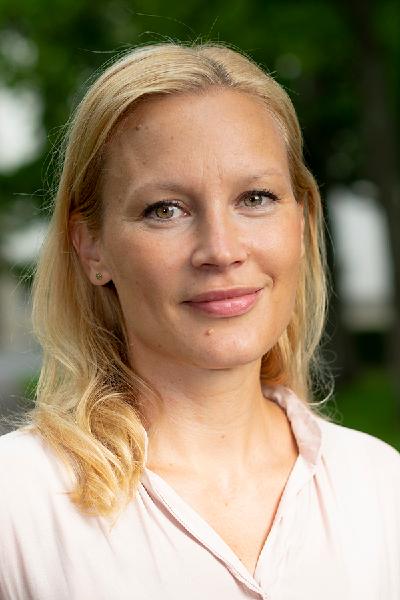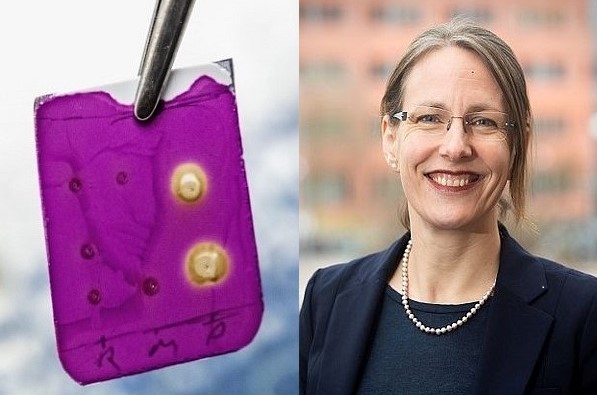Why have you started a new Division of Biomedical Engineering?
“It’s a strategic initiative within the Department of Materials Science and Engineering, as we are home to research activities in the area of biomedical engineering that have grown substantially, and which we want to highlight as a department. Eighteen months ago the Department of Engineering Sciences was divided into three new departments, one of them being the Department of Materials Science and Engineering, and the next step as part of this new organisational structure has been the establishment of a new Division of Biomedical Engineering. We will be evaluated after two and a half years to see whether this initiative should continue or not. In the long-term, we also want to set up a third-cycle subject area as an established research programme in Biomedical Engineering.”
Which research groups are included in the new division?
“My own group EMBLA and the BioMaterial Systems group (BMS) which is led by Professor Cecilia Persson (picture to the right). We are currently recruiting a new associate senior lecturer who we hope will take up their post in November in the area of additive manufacturing and 3D printing of implants and various other facets  of biomedical engineering. Also part of our division is Gemma Mestres, who is a senior lecturer and leads her own group specialising in new methods for evaluating biomaterials using microfluidic systems, as part of efforts to replace animal testing (at least to some extent) in the future. These research groups are particularly relevant to biomedical engineering and technology, and have a critical mass in the area, making them ideal foundations upon which to build the new division.
of biomedical engineering. Also part of our division is Gemma Mestres, who is a senior lecturer and leads her own group specialising in new methods for evaluating biomaterials using microfluidic systems, as part of efforts to replace animal testing (at least to some extent) in the future. These research groups are particularly relevant to biomedical engineering and technology, and have a critical mass in the area, making them ideal foundations upon which to build the new division.
“We have around 30 people in the division engaged in many collaborations both within and outside the Faculty. Due to the interdisciplinary orientation of our research, both my own and Cecilia’s groups are collaborating with people from BMC. Furthermore, Cecilia leads the Additive Manufacturing for the Life Sciences competence centre together with Johan Kreuger of BMC, in which a number of divisions and departments in both the Disciplinary Domain of Science and Technology and the Disciplinary Domain of Medicine and Pharmacy are involved, as well as University Hospital.”
Tell us more about the new organisational approach that will see you and Cecilia Persson alternating responsibility as Division Head.
“Cecilia Persson and I started this division together and our view is that we are running it together. However, since there is a requirement for one signatory for decisions, I will be Division Head during the first year, and Cecilia will formally take on the role during the second year. The one of us who is not Division Head will, in practice, serve as Deputy Division Head, although we don’t actually have that title in our department. However, we believe that shared leadership is a much stronger way to lead a division. It ensures we have someone to brainstorm and check ideas with. Sharing assignments and responsibilities has its advantages: if one of us is unable to make it to meetings, the other can take them. While I may be formally responsible, I won’t be making any decisions without first ensuring that Cecilia and I are in agreement about how to handle them.”
What is currently on your desk?
“The main thing going on right now while we are still in the early days of the division is the need to set up an environment that works well. I see it as us building a research environment. How do we best gather groups in similar fields to ensure we can work well and get stronger and better together? This encompasses many practicalities such as getting to know each other and gaining access to each other’s labs. During the pandemic, Cecilia has had around five new doctoral students start work and I have never met them. And now all of a sudden I am their boss! So that’s something that we will be working on a lot during the coming autumn – making sure that we actually meet people and get to grips with what everyone is doing in further detail so that we can find synergies between our groups.”
What do you think this investment will mean for your own research?
“What springs to mind is the technological development that Cecilia has been working on using 3D printing and the activities in which her main strengths lie. 3D-printing is something I haven’t focused on, but it will be a huge strength for us to have experts in the same division who can help each other to get various projects off the ground. My group has specific process technologies where we work with the cleanroom and on smaller scales at a micro- and nano-levels, which I’m sure Cecilia’s group will be able to benefit from in their projects. Another thing that springs to mind are the various print-outs being produced by BMS and how these can be integrated into microfluidic systems being developed by my group – in fact, there are loads of examples of what could be even better if you know about what others are up to and you work together!”
